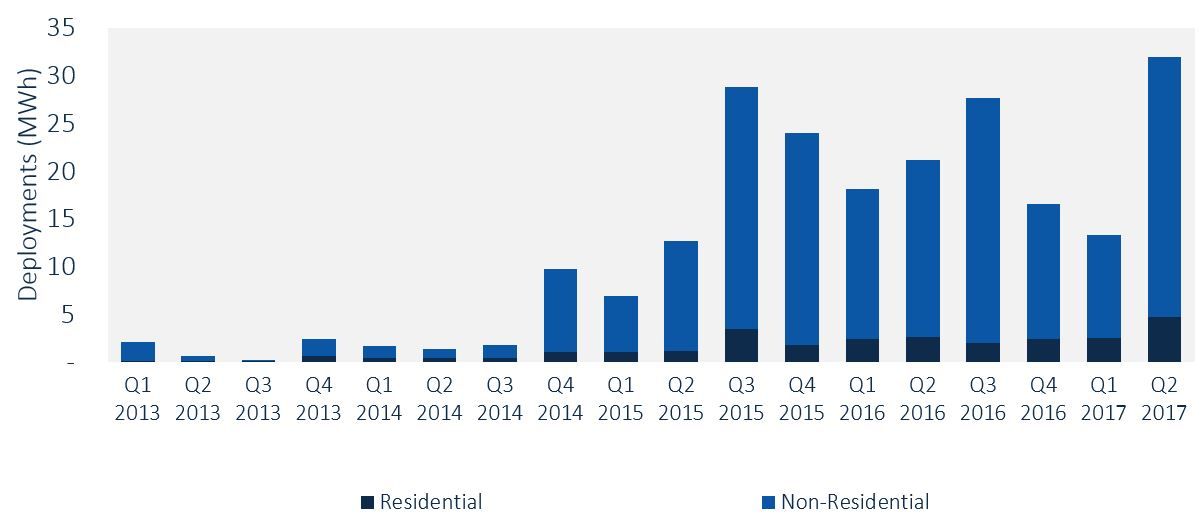In the second quarter of 2017, 443 residential and commercial energy systems were deployed across the United States, representing 32 megawatt-hours of capacity.
According to GTM Research and the Energy Storage Association’s (ESA) U.S. Energy Storage Monitor, this is the most grid-interactive behind-the-meter energy storage ever deployed in a single quarter.
FIGURE: U.S. Behind-the-Meter Energy Storage Deployments by Segment
Source: GTM Research / ESA U.S. Energy Storage Monitor, Q3 2017
Much of the residential growth resulted from projects in California and Hawaii. In particular, 71 percent of Hawaii’s second-quarter deployments came directly from the Customer Self-Supply program, which is seeing an increase in activity after several quarters of sluggishness.
“California held the lead in behind-the-meter deployments as the Self-Generation Incentive Program (SGIP) queue continues to clear,” said Brett Simon, an energy storage analyst at GTM Research, and one of the report’s authors.
“Toward the end of this year, we expect to see more SGIP-related deployment activity as the first deployments from the modified program, which opened in May, start to be interconnected. Furthermore, we expect to see greater growth from California’s residential segment in the next few years given the residential carve-out under the latest version of SGIP and changes to time-of-use rates for solar customers.”
Led by deployments in California and New York, the non-residential market, which includes commercial, industrial, religious, military and nonprofit behind-the-meter deployments, rose to 27.3 megawatt-hours in Q2 2017, growing 151 percent over the first quarter of 2017.
“New York experienced an uptick in non-residential deployments this quarter, though challenges around lithium-ion system permitting in New York City have slowed the market despite a massive opportunity identified by developers,” Simon added.
The front-of-meter segment -- which typically represents the bulk of deployments -- fell after two consecutive quarters in which more than 200 megawatt-hours were deployed. There were 18.5 megawatt-hours deployed this past quarter. Most of the Aliso Canyon projects came on-line in prior quarters, concluding the entire expedited obligation set by the California Public Utilities Commission.
Despite the down quarter for the segment, several states including Arizona, Nevada, New Jersey, New Mexico and Virginia made progress on policies and proceedings that encourage utilities to accommodate storage in distribution planning and renewable integration efforts.
FIGURE: U.S. Energy Storage Deployments, 2012-2022E

Source: GTM Research / ESA U.S. Energy Storage Monitor, Q3 2017
In total, 50.4 megawatt-hours of energy storage were deployed in Q2 2017, rising 6 percent from the same quarter last year. GTM Research expects 591 megawatt-hours of storage to be deployed across all segments by the end of this year.
***
You can download the free executive summary or purchase the full report here (clients can download here).



